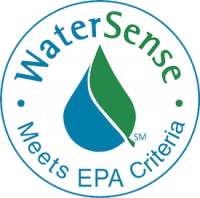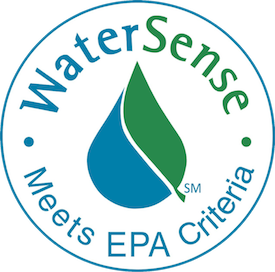The industry’s first blogosphere for the perpetually satirical Freeport, Ill. — Local man Steve Palmer was visibly upset when told about International Women’s Day, held March 8. “Why the hell isn’t there a International Men’s Day,” chirped Palmer, the IT support tech from a nearby Rockford Internet service company. “I’m pissed. Why are women getting so Read more
Guest Blog

The industry’s first blogosphere for the perpetually satirical
Freeport, Ill. — Local man Steve Palmer was visibly upset when told about International Women’s Day, held March 8. “Why the hell isn’t there a International Men’s Day,” chirped Palmer, the IT support tech from a nearby Rockford Internet service company.
“I’m pissed. Why are women getting so much love these days and meanwhile, nothing for us guys?” continued Palmer. “I’ve worked my ass off for years and what recognition do I ever get?”
With the World Economic Forum’s 2017 Global Gender Gap Report findings telling women that gender parity is more than 200 years away—there has never been a more important time to keep motivated and #PressforProgress, The International Women’s Day 2018 campaign theme. And with global activism for women’s equality fueled by movements like #MeToo, #TimesUp and more, says the International Women’s Day website, there is a strong global momentum striving for gender parity.
And while gender parity won’t happen overnight, the good news is that across the world women are making positive gains day by day. Plus, there’s indeed a very strong and growing global movement of advocacy, activism and support.
Meanwhile, Palmer has been coordinating with friends, campaigning for an International Men’s Day. When we reached out to Palmer and asked about potential slogans for his campaign, he responded, “Don’t Forget About Us—#ThatsWhatHeSaid.”
* The names and events in this post are purely satirical to further messages in the industry.

It appears we are right back to this battle again. EPA’s WaterSense is in peril once again. The federal government has announced budget cuts for the U.S. Environmental Protection Agency’s (EPA) in 2019, and one that could be eliminated is WaterSense, a voluntary partnership program to label water-efficient products as a resource for helping to Read more
 It appears we are right back to this battle again. EPA’s WaterSense is in peril once again. The federal government has announced budget cuts for the U.S. Environmental Protection Agency’s (EPA) in 2019, and one that could be eliminated is WaterSense, a voluntary partnership program to label water-efficient products as a resource for helping to reduce water use. The $6.1 billion proposal represents a 23% cut from the EPA’s 2018 budget and once again includes elimination of EPA’s WaterSense program.
It appears we are right back to this battle again. EPA’s WaterSense is in peril once again. The federal government has announced budget cuts for the U.S. Environmental Protection Agency’s (EPA) in 2019, and one that could be eliminated is WaterSense, a voluntary partnership program to label water-efficient products as a resource for helping to reduce water use. The $6.1 billion proposal represents a 23% cut from the EPA’s 2018 budget and once again includes elimination of EPA’s WaterSense program.
The fact is, as a result of the WaterSense program, businesses have developed more than 21,000 models of WaterSense-labeled products for bathrooms (showerheads, faucets, and urinals, in addition to toilets), commercial kitchens, and irrigation systems.
In addition, an American Water Works Association 2016 survey of water utilities found that 72% of utilities recognize that the WaterSense program is critical to their commercial, industrial, and institutional water conservation efforts, and 86% of utilities consider conserved water as one of their water supply alternatives.
Nevertheless, the WaterSense continues to carry the target of budget cuts, and, according to the PHCC National Association, the Administration has proposed spending cuts to the EPA budget by nearly a quarter for fiscal year 2019. The reduction slashes funding for a myriad of activities, including research and state programs.
According to Dain Hansen, vice president of Government Relations, The IAPMO Group, the White House is seeking to cut more than $2.5 billion from the annual budget of the Environmental Protection Agency—an overall reduction of more than 23%. The fiscal 2019 proposal marks the Trump administration’s latest attempt to shrink the reach of an agency the president once promised to reduce to “little tidbits.” The EPA already has lost hundreds of employees to buyouts and retirements over the past year, and its staffing is now at Reagan-era levels, conveys Hansen. Under the latest budget, the agency would continue to shrink in size, leaving much more of the work of environmental protection to individual states. The administration’s plan would cut several dozen programs altogether.
Hansen says that an industry letter is being circulated for signatures to save the widely-supported WaterSense program. In the letter it stated that economic and social benefits of the WaterSense program far outweigh its $3 million budget by helping families and businesses of all sizes to reduce utility bills and to conserve water. It is an independent and trusted resource for local policymakers in determining how to best to allocate water resources in their communities.
More benefits:
• In 2015, more than 50% of all tank – type toilets entering the market complied with WaterSense specifications.
• Today, all toilets, faucets , and showers sold in The Ho me Depot stores are WaterSense-labeled. Last year, The Home Depot offered more than $43.8 million in product markdowns of WaterSense-labeled products to encourage homeowners to switch out their older, less efficient devices. The retailer also partnered with utilities to make more than 350 local utility rebates available to its customers. This included a statewide campaign in drought-stricken California to provide $100 incentives for WaterSense-labeled toilets.
• KB Homes constructs homes optimized for water conservation , particularly in water-challenged regions. Cumulatively, KB Homes’ WaterSense-labeled homes and installation of water-efficient features save an estimated 3 million gallons of water daily, compared with typical existing homes that do not have the same water-saving items.
• The WaterSense website lists 130 different rebates being offered by local water authorities, utilities, and city governments to encourage the utilization of WaterSense-labeled products. Because of the value of WaterSense to their business, their employees, and their customers, more than 1,700 manufacturers, water and energy utilities, distributors, state and local governments, non-profit organizations, trade associations, and retailers nationwide have partnered with the program.
• A 2017 EPA Inspector General report confirmed that EPA has the authority to operate the WaterSense program using authorities granted it by the Clean Water Act and Safe Drinking Water Act. The report also found that WaterSense is a “well-designed and managed program” and that it resulted in “consumer and industry confidence in WaterSense-labeled products, broad stakeholder support, and returns on investment.” The report further found that the program had “controls in place to ensure that the water and energy savings it calculated were reasonable.”
Food for thought. Did you know—a single medium to long-range subsonic Tomahawk cruise missile costs roughly $1.5 million? Tell me, why does the federal government need to cut WaterSense Program again?

If you follow us on social media, especially Instagram, you might already know how much the Milwaukee PACKOUT tool storage system has impressed me. If any of this is news to you please take a minute to check out some of my videos here, here or here. If you want to win your own 3-piece Read more
If you follow us on social media, especially Instagram, you might already know how much the Milwaukee PACKOUT tool storage system has impressed me. If any of this is news to you please take a minute to check out some of my videos here, here or here.
If you want to win your own 3-piece set of PACKOUT boxes now is your chance! Just click on over to our Instagram and follow the 2 required rules listed and you’re entered. The winner will be announced on our IG Friday, March 9th.
The Milwaukee 3pc Close Quarters Tubing Cutter set #48-22-4263 has been available for about a year now, I recently added it to my tool bag. The cutters can be bought separately but I definitely have a need for all three sizes (1/2″, 3/4″ & 1″) so the kit made the most sense for me. I Read more
The Milwaukee 3pc Close Quarters Tubing Cutter set #48-22-4263 has been available for about a year now, I recently added it to my tool bag. The cutters can be bought separately but I definitely have a need for all three sizes (1/2″, 3/4″ & 1″) so the kit made the most sense for me.
I purchased the kit at the Milwaukee factory service center here in the Twin Cities for about $50, a price point I would expect for all three sizes and a case. So far I have only used the cutters for a few weeks and I’m still on the fence. Having used similar style cutters for twenty years, I have to wonder if I didn’t get a bad set or if they simply need some “breaking in” time to exercise the tension springs. Let me explain.
The cutting wheel articulates under spring tension, this is how the cut happens. When you place the cutter on the copper tubing the wheel is spring loaded and pushing against the outside wall of the tube, as the cutter turns the wheel and spring does the cutting. My problem so far is that when the cutter is placed on the tube and not yet cutting, it tends to jump off the pipe. This is annoying. Check out the video below for a visual.
I’ve talked with dozens of other plumbers using the cutters or similar styles, some having the same issue, many who are not. I intend to continue using the set for a full month before I decide to keep them or try another cutter.

Dain Hansen is vice president of Government Relations, The IAPMO Group. He lends his frequent perspective of Capitol Hill, and the plumbing industry. Here is an edited version of his update February 16, 2018 Administration Update. WaterSense Proposed for Elimination as the President’s Budget Seeks 23% Cut at EPA. The White House is seeking to Read more
 Dain Hansen is vice president of Government Relations, The IAPMO Group. He lends his frequent perspective of Capitol Hill, and the plumbing industry.
Dain Hansen is vice president of Government Relations, The IAPMO Group. He lends his frequent perspective of Capitol Hill, and the plumbing industry.
Here is an edited version of his update February 16, 2018
Administration Update.
WaterSense Proposed for Elimination as the President’s Budget Seeks 23% Cut at EPA. The White House is seeking to cut more than $2.5 billion from the annual budget of the Environmental Protection Agency — an overall reduction of more than 23 percent. The fiscal 2019 proposal released Monday marks the Trump administration’s latest attempt to shrink the reach of an agency the president once promised to reduce to “little tidbits.” The EPA already has lost hundreds of employees to buyouts and retirements over the past year, and its staffing is now at Reagan-era levels. Under the latest budget, the agency would continue to shrink in size, leaving much more of the work of environmental protection to individual states. The administration’s plan would cut several dozen programs altogether. Among them: the popular WaterSense program; funding for state radon-detection initiatives; assistance to fund water system improvements along the U.S.-Mexico border; and partnerships to monitor and restore water quality in the Gulf of Mexico, Puget Sound and other large bodies of water. An industry letter is being circulated for signatures to save the widely-supported WaterSense program.
Trump Surprises Lawmakers With Support For Gasoline Tax Hike. President Donald Trump surprised a group of lawmakers Wednesday by saying he would support a 25-cent-per-gallon increase in federal gasoline and diesel taxes to help pay for upgrading American roads, bridges and other public works. Senator Tom Carper of Delaware, the top Democrat on the Senate Environment and Public Works Committee, said Trump unexpectedly raised the idea of the fuel-tax increase several times during a White House meeting with a dozen Republican and Democratic lawmakers from key House and Senate committees. Trump previously has said he would consider raising the federal gasoline tax, which hasn’t been increased since 1993. But it’s not been part of the discussion on his infrastructure plan, and it’s an idea that many Republicans and some Democrats have dismissed. A White House official declined to comment on Trump’s discussions in the closed-door meeting but said that all options were on the table to meet the main objectives of the president’s plan. Groups including the U.S. Chamber of Commerce and the American Trucking Associations support the idea of increasing the gas tax as the most efficient and easiest way to generate more money for projects. Senator John Barrasso of Wyoming, the chairman of the Senate Environment and Public Works Committee, said he opposes raising the gas tax because not all drivers who now use the roads pay the tax, and not all of the money collected goes toward repairing and restoring infrastructure.
White House Energy Adviser’s Resignation Leaves Vacuum on Climate Issues. The surprise resignation this week of a top White House energy and environment adviser adds yet another wrinkle in the U.S. effort to influence how nearly 200 nations implement a global climate deal that the Trump administration wants to leave. George David Banks, named as special assistant to President Donald Trump on international energy and environment, became the latest casualty in a controversy over security clearances. Banks reportedly resigned after learning he had been denied a formal clearance to review classified information after operating for the last year with a temporary clearance. It remains unclear who will represent U.S. negotiators at the next high-level climate summit in December in Poland, where the U.S. is likely to find a difficult position for pushing other nations to make changes to the 2015 Paris Agreement. Banks had reportedly worked since his February 2017 appointment under a temporary authorization, but resigned after learning his formal security clearance was denied due to marijuana use in 2013. Banks’ appointment was welcomed by some environmental groups due to what they considered his centrist views on international engagement on climate. But he was later derided for holding a forum on the climate benefits of coal and fossil fuels at November’s COP23 climate summit in Bonn. His resignation comes just weeks after the State Department’s third-ranking official, Tom Shannon, also seen as an internationalist on climate and other issues, announced his resignation.
Infrastructure. The long-awaited White House outline for an infrastructure bill was released this week. The plan calls for $1.5 trillion to be spent on infrastructure, with $200 billion coming from federal coffers. The plan was welcomed on Capitol Hill as a starting point for action this year, but as presented, it doesn’t have much support from lawmakers from either party. Republicans don’t want to further blow up the rising budget deficit, while Democrats are wary of the proposal’s reliance on private investment and funding from state and local governments. While there is widespread support for increased investment in infrastructure in Washington, many remain skeptical of such a comprehensive package being enacted this year due to a lack of agreement over how to pay for it. Many believe there is a potential opening to enact a much smaller bill, perhaps in the $500 billion or less range, but that becomes harder the closer the calendar gets to the mid-term elections. The impact of a smaller package also may pale compared to the infrastructure needs of the country. If we do not see significant movement on an infrastructure bill in the next few months, it is believed the issue will be shelved this year.
Industry Update.
Plumber to Olympian. The life of a top U.S. snowboarder is an expensive one, but Jonathan Cheever, who is currently in the Olympics, has supported himself with a family trade. He’s a plumber. Cheever grew up sorting plumbing fixtures for his father’s business when he was 10 years old — about the same time he began snowboarding. Shortly after high school he passed the test for his own plumbing license. He tried college, but gave it up after his freshman year to move to Utah and focus on his real love — snowboarding. Less than six months later, he was on the national team — a dream come true. But the national team doesn’t financially support the snowboarders, and all that travel can add up. It was in Utah that he realized his plumbing could help support his snowboarding. “I was like, ‘Oh man, I could use some money,’ and then, you know, people I’m staying with are like ‘actually, our friends need their faucet changed or their sink changed’ or ‘they just bought a new gas range. Can you install it for them? And they’ll pay you.’” He also started doing installations for a Home Depot subcontractor. Cheever says running his own small business also meant he could get a bigger line of credit, which he used to support his snowboarding. Be on the lookout for Cheever when cheering on Team USA this weekend!
Baby Boomer Exodus Leaves Water Utilities Understaffed. Baby boomers are retiring from water utilities in record numbers and the pool of certified treatment operators to take those jobs is running dry. Workforce retention is the top issue facing water utilities in the next 5 to 10 years, according to the Water Research Foundation‘s survey of utilities. Few programs train water treatment operators — who run the equipment and control the treatment processes to keep drinking water safe and wastewater — and larger utilities are more likely to attract talented workers, leaving smaller systems in the lurch. Most of those systems serve communities of fewer than 10,000 people and the problem is especially acute among smaller and rural utilities. To attract employees, some systems like the Hampton Roads Sanitation District in Virginia, which serves 1.7 million people, drew upon its nearly 40-year-old apprentice program where younger employees are trained on the job to qualify for a license. Similarly, the Halifax County Service Authority have tried mentoring and training programs to educate younger workers, but that wasn’t enough to fill the vacancies the authority said. Water utilities want to tap into a nationwide apprenticeship program that the Department of Labor and the National Rural Water Association jointly launched in November 2017.
Many Questions as Expert Committee Begins Study of Legionella in Plumbing. Researchers, government officials, and technical experts met last week in Washington, D.C. for the first meeting of a National Academy of Sciences, Engineering, and Medicine investigation on minimizing the spread of Legionella bacteria in building plumbing and municipal water systems. Legionnaires’ disease sickened at least 6,141 people in 2016 in the United States and killed several hundred, a death toll that is higher than any other water-related illness in the country. Legionnaires’ cases have increased more than four-fold in the last 15 years. The study aims to shed light on a disease that was first identified relatively recently, in 1976. For water systems, the committee will look at factors that increase the risk of Legionella growth. Within the building that means water temperature, water stagnation, plumbing design, disinfection, and age of pipes. The study, expected to take 18 months to complete, is sponsored by three federal agencies — Centers for Disease Control and Prevention, Environmental Protection Agency, Department of Veterans Affairs — and the Alfred P. Sloan Foundation, a philanthropic group with an interest in microbes in cities and buildings.
